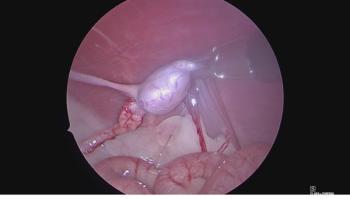
Swine practitioners aim for PRRS eradication
St. Paul, Minn. — The American Association of Swine Veterinarians (AASV) adopted a position statement reaffirming its war on porcine reproductive and respiratory syndrome (PRRS) — a disease estimated to cost the industry $560 million annually
ST. PAUL, MINN. — The American Association of Swine Veterinarians (AASV) adopted a position statement reaffirming its war on porcine reproductive and respiratory syndrome (PRRS) — a disease estimated to cost the industry $560 million annually
Experts predict the battle may drag out another 20 years. But the statement, passed during AASV's annual board meeting, shows the group eager to take a role in supporting research, practitioners and producers striving to eradicate PRRS. It's a bold approach for the association and outlines AASV's intent to steer efforts toward the disease's elimination, Executive Director Dr. Tom Burkgren says.
High mortality rate: Porcine reproductive and respiratory syndrome outbreaks cripple herds. Up to 75 percent of piglets in an infected herd can die within their first days of life, experts say.
"This is going to be a huge effort that in a big way will depend on the collaboration between universities, the government and a lot of other different parties," he says. "Our goal is to make that clear to everybody."
PRRS characterization
Those parties likely will include researchers at the University of Minnesota (UM), where professor Dr. Scott Dee, author of the position statement, has studied PRRS for years.
"Eradication is not realistic today; there are missing pieces in terms of the science," he says. "But if AASV can correlate some of the research efforts, we've got a chance."
Dr. Tom Burkgren
The statement notes that because disease control has not been effective, eradication is a necessary long-term goal. First reported in the United States in 1987, PRRS spreads via pig-to-pig contact through infected feces, urine and milk to piglets without colostral antibodies. Pigs born infected with PRRS are weak and ill, making them ineffectual nursers, the American Veterinary Medical Association reports. Viral infection leads to reproductive losses and decreased farrowing rates related to stillborn, mummified and weak live-born pigs. There currently are no effective anti-viral treatment or control programs for PRRS, Iowa State University experts say.
Call for collaboration
Dee wants that to change. While AASV promotes collaboration, identifies funding sources to support such initiatives and assists in the transfer of such PRRS information and technology, Dee urges cooperation.
"A lot has to happen," he says. "Scientists have to do their jobs, and veterinarians and producers have to team up. We need to create a nice triangle team made up of producers, researchers and practitioners."
AASV position on PRRS eradication
Should the factions unite, a "great deal" of scientific information likely will be learned about PRRS in five years, including insight into the potential for aerosol transmission. Dee expects stakeholders might witness the successful completion of regional control and eradication projects starting in the next decade.
"Fifteen to 20 years from now, national eradication efforts could be underway," he says. "It's a long shot. There will be some setbacks along the way, but I think it's realistic as long as we work together."
Newsletter
From exam room tips to practice management insights, get trusted veterinary news delivered straight to your inbox—subscribe to dvm360.




